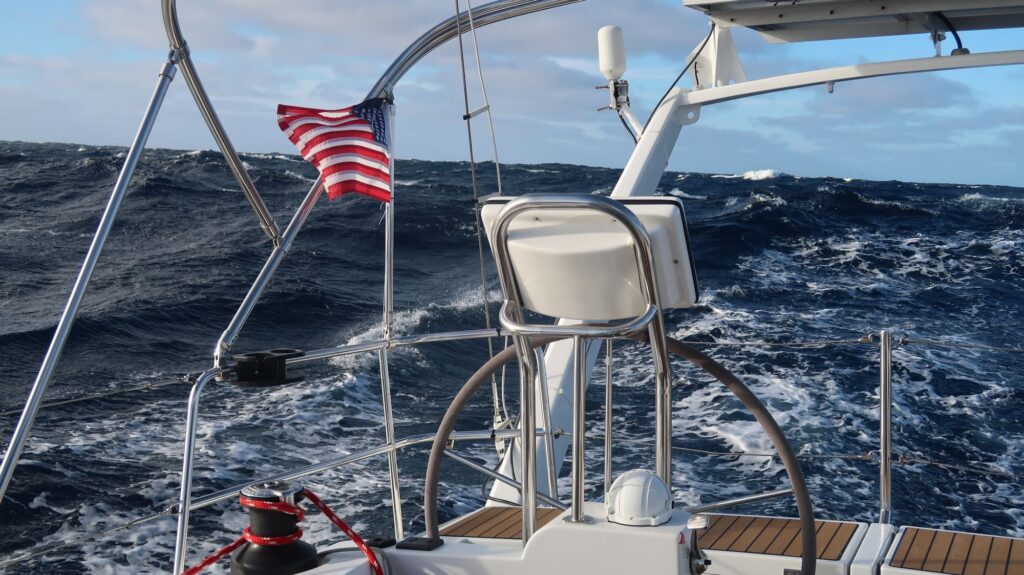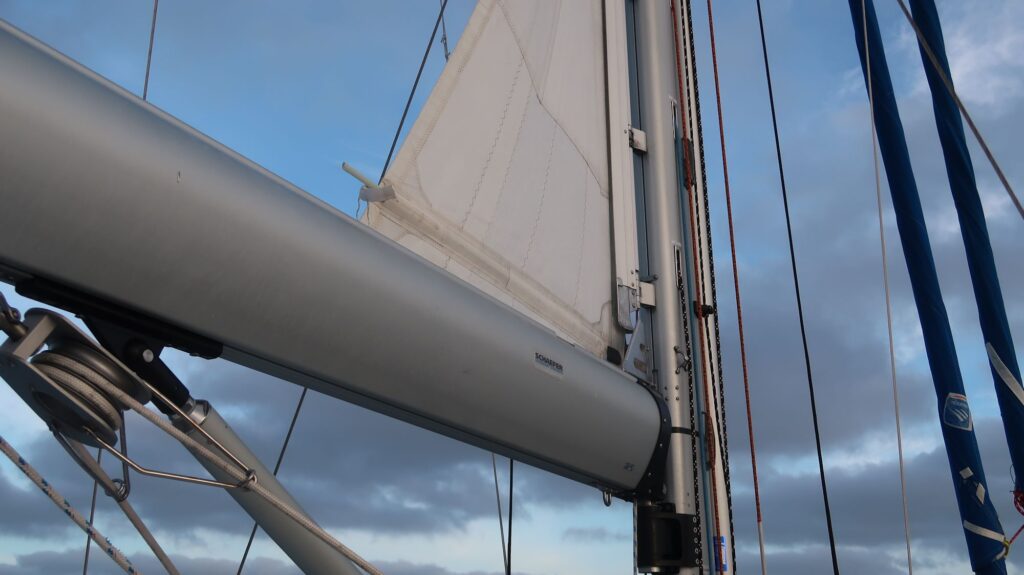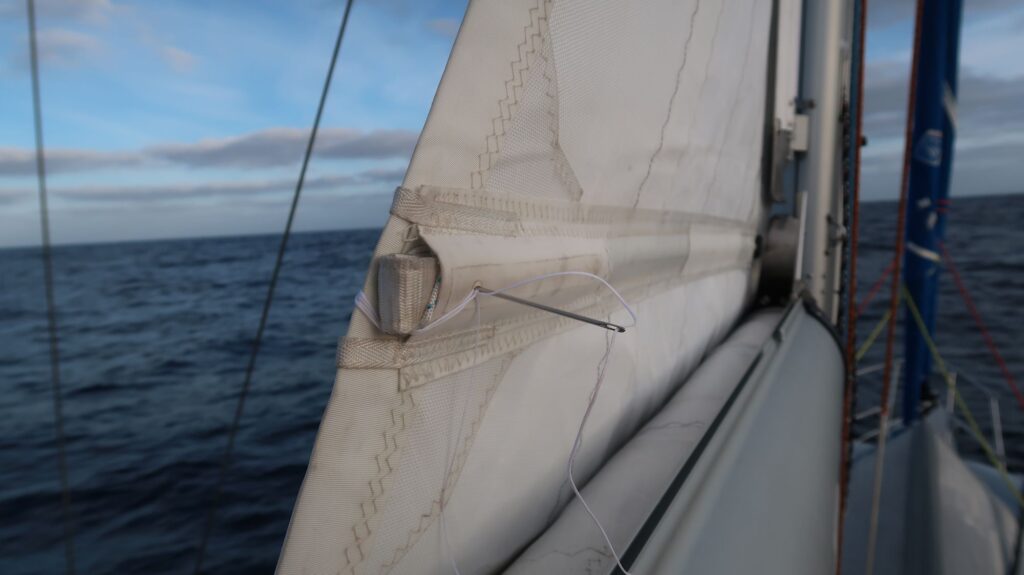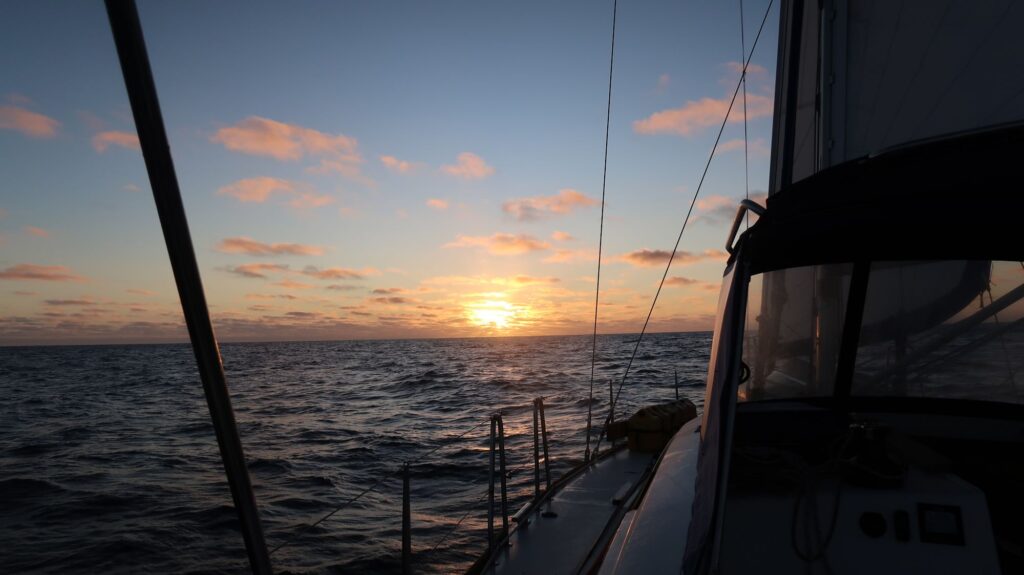I thought that once I crossed 20 degrees south latitude and got into the trade wind zone the winds would become more steady and reliable. So far that hasn’t been the case. For the last several days the wind direction has varied over 50 to 60 degrees and the wind speed range from 7 knots to 25 knots. The forecast doesn’t reveal any of this. I hope as I move farther west and north the winds will steady.
Fortunately, the autopilot on my boat has a mode where you set it to maintain a given angle to the wind instead of maintaining a fixed course. As the wind direction changes, the boat heading will change so the wind is hitting the sails at the same angle and the sails stay full. The boat’s course will also change accordingly but out in the open ocean that’s not a big deal as long as the boat, on average, is going in the right general direction.
I also expected to pick up a following current, the Peru current, but that hasn’t happened yet either. The boat speed through the water has almost always been greater than the speed over ground (SOG), indicating a contrary current. The SOG is determined by GPS position fixes so it’s very accurate. The boat speed is determined by a little paddlewheel spinning on the bottom of the boat, much less accurate. Often the paddlewheel will get fouled with bits of weed or other things in the water that inhibit it spinning freely so it usually reports boat speeds that are too low. Unusual for it to be too high. If the paddlewheel calibration is off I can adjust it but I need a measured course in pretty still water, or run the course in both directions, to calibrate it. Not going to happen at sea. For now I’ll live with it. The SOG is the one that matters since that tells me how fast I’m getting to my destination.
Looking at longer range weather patterns along my route it appears the El Nino weather pattern may result in changing my destination from Gambier to the Marquesas. I won’t know for a few weeks yet but right now it looks like difficult weather and contrary winds going south to Gambier (at 23 degrees south latitude) while the Marquesas remain in the middle of the trade wind flow I’m now joining. The Marquesas are somewhat farther than Gambier but closer in terms of time if these wind patterns hold. I might have first heard of the Marquesas in Stephen Stills song “Southern Cross”. Great song.
I’ve had one failure since leaving Puerto Montt, the top fiberglass batten in the mainsail broke. I have spare batten material which I inserted in the batten pocket but it needed to be cut to the right length with a hacksaw. This can be a little tricky if you do it while in place, holding the batten with one hand with the saw in the other hand and holding on to the boat with my third hand. My Dad, who is was in the Navy in WWII, said sailors have a rule “one hand for yourself, one hand for the ship”. What if the ship needs two hands? If you’re in the Navy you get another guy. Not an option on Phywave. It would be less convenient, but safer, to mark the batten length, pull it out, and take it back to the cockpit to cut it.
With the batten cut to length the next step is to push a strap attached to the sail into the batten pocket. The strap has Velcro on one side and wraps around the end of the batten where it’s then shoved deep into the batten pocket where the opposite Velcro is located. Usually this system is sufficient to hold the batten in place but on this voyage I’ve had problems with the battens working their way loose so I now sew them in. To do this I get my cordless drill and drill a hole through the batten pocket, the fiberglass batten, and sailcloth on the other side and sew the batten in with heavy sailmaker’s thread.
Otherwise, all is well on Phywave. It’s just a matter of turning the miles, day after day, week after week.



